Platanthera leucophaea (Nutt.) Lindley
Eastern prairie fringed-orchid
The specific epithet leucophaea is the derived from the Greek terms
meaning "white" and "gray," apparently in reference
to the off-white color of the flowers.
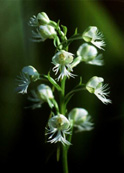
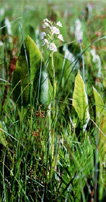
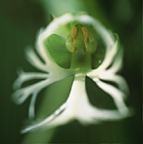
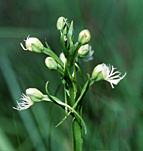
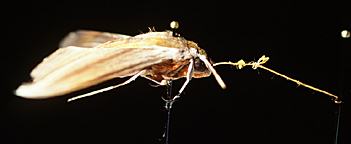
DESCRIPTION: Plant
glabrous, arising from a cluster of fleshy, thickened roots, 20-90 cm tall.
Leaves 2-5, oblanceolate to lanceolate, the bases of the leaves sheathing
the stem, gradually reduced to lanceolate bracts higher up on the stem,
8-19 cm long and 1.5-5 cm wide, keeled. Inflorescence a loose or
dense raceme, 5-20 flowered; flowers creamy-white, strongly fragrant with
fragrance produced mainly at dusk, each flower subtended by a lance-linear,
acuminate bract. Sepals ovate-elliptic to ovate, 7-10 mm long and
4-8 mm wide, colored as flowers; sepals loosely connivent with petals, concave.
Petals spatulate to obovate, 8-15 mm long and 7-10 mm wide, the margin
finely lacerate or toothed, loosely appressed to the sepals and colored
as the sepals. Labellum tripartite and fringed (the fringes typically
reaching about halfway to the base of the labellum), shallowly clawed, each
segment of labellum fan-shaped; 1.5-2.5 cm long and wide, colored as flowers;
base of labellum with a +/- clubbed nectar spur projecting behind,
3-4.5 cm long.
SIMILAR SPECIES: Platanthera leucophaea is most likely to be
confused with P. lacera or the rare albino
P. psycodes. P. leucophaea can
be separated from P. lacera by the relative
length of the spur: the spur is much longer than the ovary in P. leucophaea,
and shorter than or equal to the ovary in P. lacera.
The rare albino specimen of P. psycodes
can be separated by the shape of the column, which is short and compact
in P. psycodes, and large and projecting
in P. leucophaea.
HABITAT: Platanthera leucophaea is almost exclusively found in
moist, circumneutral prairies. It is also occasionally found in open Sphagnum
bogs.
FLOWERING DATES: July 5-August 1.
POLLINATION: Platanthera leucophaea is pollinated by several
species of hawkmoths (Robertson 1928,
Sheviak & Bowles 1986, Hapeman
unpublished). The photo above shows one such hawkmoth, Xylophanes tersa,
caught pollinating P. leucophaea in July 1994 in south-central Wisconsin
(note the pollinia on the moth's proboscis).
DISCUSSION: While Platanthera leucophaea was once abundant
in moist prairies across the Midwest, today loss of habitat has made it
extremely rare, and it is listed as a federally threatened species. Currently,
it is found in less than sixty sites in the U.S., many with only a few individuals.
The location of any populations of this orchid should be reported to the
Wisconsin DNR.
WI DISTRIBUTION:  U.S. DISTRIBUTION:
U.S. DISTRIBUTION:
Go directly to Wisconsin herbarium records.
Return
to the main LIST of the Orchids of Wisconsin.
Return to the main KEY to the Orchids of
Wisconsin.





 U.S. DISTRIBUTION:
U.S. DISTRIBUTION: